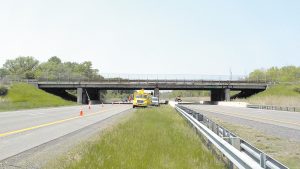The New York State Division of the Budget recently released its Fiscal Year 2025 Mid-Year Update, and there are some clear indicators our economic outlook is making incremental improvements. For one, tax receipts were strong enough to help cut down a prospective budget gap by $1.3 billion. This is welcome news, and it is great […]
Already an Subcriber? Log in
Get Instant Access to This Article
Become a Central New York Business Journal subscriber and get immediate access to all of our subscriber-only content and much more.
- Critical Central New York business news and analysis updated daily.
- Immediate access to all subscriber-only content on our website.
- Get a year's worth of the Print Edition of The Central New York Business Journal.
- Special Feature Publications such as the Book of Lists and Revitalize Greater Binghamton, Mohawk Valley, and Syracuse Magazines
[bypass-paywall-buynow-link link_text="Click here to purchase a paywall bypass link for this article"].
The New York State Division of the Budget recently released its Fiscal Year 2025 Mid-Year Update, and there are some clear indicators our economic outlook is making incremental improvements. For one, tax receipts were strong enough to help cut down a prospective budget gap by $1.3 billion. This is welcome news, and it is great to see New Yorkers driving economic activity during these challenging times.
While this is good news, it certainly does not mean New York is out of the woods yet. We still have some serious structural spending problems, and our financial outlook for the coming three years includes a potential $14.3 billion budget gap. Our work is not done.
Medicaid is one of the primary contributors driving up state spending. In order to prevent exceeding the Medicaid Global Cap, the state will have to pull more than $1 billion out of its general fund. That is an enormous sum, and doing so year after year is unsustainable. Therefore, addressing Medicaid must be a top priority during the upcoming budget process.
There are other problems that need to be addressed as well. While the Medicaid issue is relatively complex, other spending-related problems can be corrected by reprioritizing our financial goals. Over the last five years, overall state spending has increased by $67 billion. We’ve already spent billions of dollars supporting illegal migrants, and that will grow to total $4.3 billion through Fiscal Year 2026. We simply cannot afford to indefinitely support migrants, especially considering how inefficiently the state has administered such aid. At the very least, we should be investing what we do spend in child care, infrastructure, and public safety — all things that truly enhance the quality of life in our communities.
The Assembly Minority Conference has consistently advocated for an economic approach emphasizing lean spending, minimal taxes, and policies that promote organic economic growth. The good news is that economic activity in the state is showing signs of life. The fear, though, is that this will be perceived as an excuse to spend more money. This should not be the case. Also, considering this progress, there should be no talk of any tax increases as we begin planning the upcoming budget. We do not have a revenue problem in New York state, we have a spending problem.
Let’s build upon this positive outlook by going back to basic economics. Our economic success depends on our ability to keep costs as low as possible; the less we spend, the less we need New York taxpayers to contribute. We have a chance to naturally reduce an impending budget deficit, and I hope that goal resonates with members from every region in New York.
William (Will) A. Barclay, 55, Republican, is the New York Assembly minority leader and represents the 120th New York Assembly District, which encompasses all of Oswego County, as well as parts of Jefferson and Cayuga counties.
William (Will) A. Barclay, 55, Republican, is the New York Assembly minority leader and represents the 120th New York Assembly District, which encompasses all of Oswego County, as well as parts of Jefferson and Cayuga counties.



